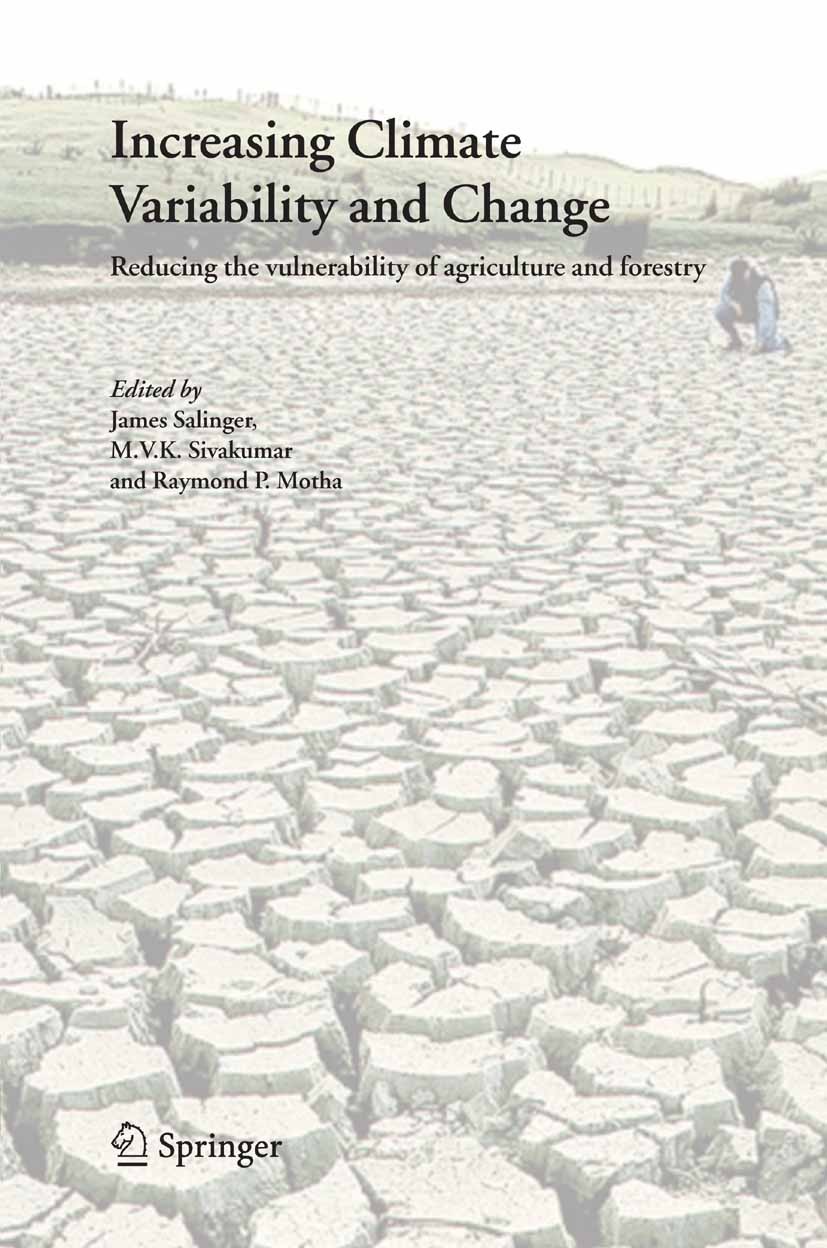| 书目名称 | Increasing Climate Variability and Change | | 副标题 | Reducing the Vulnera | | 编辑 | James Salinger,M.V.K. Sivakumar,Raymond P. Motha | | 视频video | http://file.papertrans.cn/464/463340/463340.mp4 | | 概述 | Reviews the latest assessments of climate variability and climate change, and impacts on agriculture and forestry.Recommends appropriate adaptation strategies to reduce vulnerability of agriculture an | | 图书封面 |  | | 描述 | .One of the major challenges facing humankind is to provide an equitable standard of living for this and future generations: adequate food, water and energy, safe shelter and a healthy environment. Human-induced climate change, and increasing climate variability, as well as other global environmental issues such as land degradation and loss of biological diversity, threaten our ability to meet these basic human needs. It is undisputed that the last two decades have been the warmest this century, and likely to be the warmest for the last 1000 years, sea level is rising, rain and snowfall patterns are changing. Arctic sea ice is thinning and the frequency and intensity of El-Niño events appear to be increasing. In addition, the frequency of extreme events is rising and many parts of the world have recently suffered major heat-waves, floods and droughts leading to significant loss of life and economic costs. This requires the global community to give urgent attention to addressing key issues. The range of adaptation options for agriculture and forestry is generally increasing because of technological advances, thus reducing the vulnerability of these systems to climate change. However | | 出版日期 | Book 2005 | | 关键词 | Greenhouse gas; Meteorology; Snow; climate change; development; ecosystem; forest; climate change impacts; F | | 版次 | 1 | | doi | https://doi.org/10.1007/1-4020-4166-7 | | isbn_softcover | 978-90-481-6842-2 | | isbn_ebook | 978-1-4020-4166-2 | | copyright | Springer Science+Business Media B.V. 2005 |
The information of publication is updating

|
|
 |Archiver|手机版|小黑屋|
派博传思国际
( 京公网安备110108008328)
GMT+8, 2025-11-19 16:50
|Archiver|手机版|小黑屋|
派博传思国际
( 京公网安备110108008328)
GMT+8, 2025-11-19 16:50


